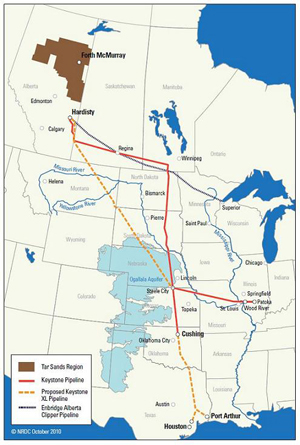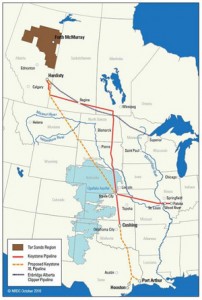On Wednesday, January 18, in a move fomenting consternation within Republican circles and celebration within environmentalist ones, President Barack Obama announced the rejection of the Keystone XL pipeline. Though there is debate over how many jobs the pipeline’s construction and maintenance would actually create—Keystone builder TransCanada posits that 20,000 jobs will be created while a Cornell study puts it closer to 5,000—an infrastructure project like this in a period of high unemployment would almost certainly help improve the economy. For this reason alone the President’s decision to block Keystone was the wrong one. But more importantly, the movement opposing the pipeline, as noble in its ambitions as it may be, is utterly misguided.
The greatest concern surrounding the pipeline is not the danger of polluting the Ogallala Aquifer, a crucial water source in the American Midwest, as surveying is well underway to find a route that bypasses both the Aquifer and the ecologically sensitive Sand Hills region altogether. No, the issue bothering environmentalists about the Keystone XL pipeline is the fact that it is associated with the development of the Alberta oil sands, a move that has been hyperbolically categorized as “Game Over” for the planet by one particularly vocal opponent. When protesters swarmed the White House last year, their logic was simple: end the pipeline, stop oil sands development. But this logic is severely flawed.
The Canadian government and the Canadian energy industry have made clear that development of the oil sands will continue regardless of the ultimate fate of the pipeline. Development is underway, permits have been issued, and a political party eager to promote Canada’s energy resources has recently strengthened its majority in Parliament. The United States is far from the only consumer interested in oil from the Alberta oil sands; growing demand in parts of Asia means that there is no shortage of potential Canadian business partners.
Plans are already being made to transport the oil sands by other means if Keystone falls through, including proposals to transfer the oil to the US by rail or to China by sea. Rail environmental regulations are far more lax than those associated with pipelines, and China’s environmental record is unimpressive to say the least. Environmental protesters opposing the Keystone pipeline fail to understand that stopping it does not change Canada’s economic and political interest in developing the oil sands, and if anything paves the way for more environmentally unsafe means of transporting the oil to prospective buyers.
The moral of the story is this: the controversial development of the Alberta oil sands will continue no matter what, and transportation by pipeline to the United States is far safer and far more likely to create greatly-needed American jobs than any other method. Rejecting the Keystone XL pipeline not only fails to address the potentially legitimate concerns environmentalists have with the development of the oil sands and our continued reliance on fossil fuels, it also throws away thousands of jobs, threatens to derail the United States’ professed goal of energy security, and potentially increases the risk of an oil spill.

